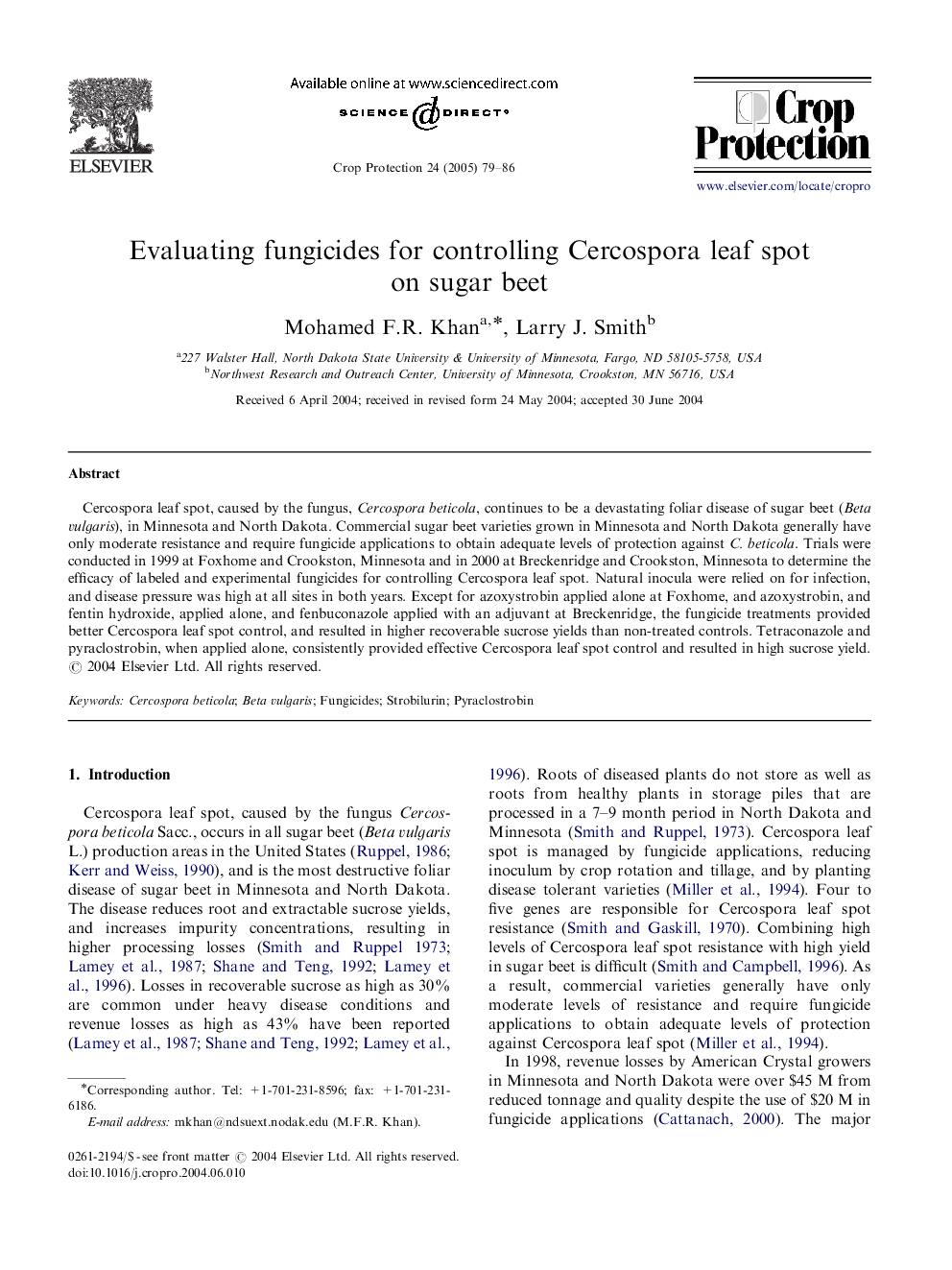| Article ID | Journal | Published Year | Pages | File Type |
|---|---|---|---|---|
| 9472875 | Crop Protection | 2005 | 8 Pages |
Abstract
Cercospora leaf spot, caused by the fungus, Cercospora beticola, continues to be a devastating foliar disease of sugar beet (Beta vulgaris), in Minnesota and North Dakota. Commercial sugar beet varieties grown in Minnesota and North Dakota generally have only moderate resistance and require fungicide applications to obtain adequate levels of protection against C. beticola. Trials were conducted in 1999 at Foxhome and Crookston, Minnesota and in 2000 at Breckenridge and Crookston, Minnesota to determine the efficacy of labeled and experimental fungicides for controlling Cercospora leaf spot. Natural inocula were relied on for infection, and disease pressure was high at all sites in both years. Except for azoxystrobin applied alone at Foxhome, and azoxystrobin, and fentin hydroxide, applied alone, and fenbuconazole applied with an adjuvant at Breckenridge, the fungicide treatments provided better Cercospora leaf spot control, and resulted in higher recoverable sucrose yields than non-treated controls. Tetraconazole and pyraclostrobin, when applied alone, consistently provided effective Cercospora leaf spot control and resulted in high sucrose yield.
Related Topics
Life Sciences
Agricultural and Biological Sciences
Agronomy and Crop Science
Authors
Mohamed F.R. Khan, Larry J. Smith,
